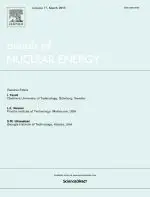Authors' Update - keeping journal authors in touch with industry developments, support and training

귀하의 브라우저가 완벽하게 지원되지 않습니다. 옵션이 있는 경우 최신 버전으로 업그레이드하거나 Mozilla Firefox, Microsoft Edge, Google Chrome 또는 Safari 14 이상을 사용하세요. 가능하지 않거나 지원이 필요한 경우 피드백을 보내주세요.
이 새로운 경험에 대한 귀하의 의견에 감사드립니다.의견을 말씀해 주세요 새 탭/창에서 열기
2015년 2월 12일
An editor and publisher highlight the dos and don’ts when providing feedback
Peer review has a vital role to play in research and publishing and a key step in that process is the revision of your paper. However, knowing how to respond to reviewers' comments isn't always easy - get it right and you could see your paper published, get it wrong and it could mean rejection. So what can you do to increase your chances of success?
There's plenty of room for improvement, says Imre Pázsit, Executive Editor of the Annals of Nuclear Energy 새 탭/창에서 열기 and a Professor at Chalmers University of Technology 새 탭/창에서 열기 in Göteborg, Sweden.

Annals of Nuclear Energy book cover
"Originally I thought the mistakes in authors' responses were because of a lack of information on the journal website, or in the letter asking them to revise, but I think it's actually more than that," explains Professor Pázsit. "When early career researchers start publishing, they do so under the guidance of more senior researchers, who show them how to write a paper. Except this part – responding to reviewers' comments – often gets left out."
He thinks this aspect of the process needs to be systematically included in training for authors, like in our recent Publishing Connect webinar "How reviewers look at your paper 새 탭/창에서 열기".
Professor Pázsit says: "It's difficult to systematize manuscript writing in general, a bit like trying to explain how to compose music, but there should be training. Responding to reviews is a point missed by most people who provide professional training. I think there are a few main things that could make the work of editors and reviewers as effective as possible."
As an author, it can be difficult to read reviewers' suggestions – after all, you have probably poured blood, sweat and tears into the manuscript. You might even have a knee-jerk reaction to defend your article.
According to Professor Pázsit, disagreement is fine – in fact, it is actually part of the process – but it's important you can back it up. "The author may not agree with a comment – this is the essence of the scientific debate, a natural part of the business."
Explaining why you disagree will help the reviewer and editor understand your point of view and ultimately help them make an informed decision about your paper. As Elsevier Executive Publisher Dr. Jaap van Harten advises, "don't fall into the trap of writing to the editor to say that the reviewer is crazy, or incompetent. Make it a factual response. You should have a complete, solid and polite rebuttal to the editor. Write in such a manner that your response can be forwarded to the reviewer – editors love copy pasting."
"The main mistake I see in authors' responses to reviewers' comments is in what I call the 'ergonomy' of the information – how well it's described to the editors and reviewers," says Professor Pázsit. "The editors and reviewers don't have time to check the new draft line by line and find the author's changes."
According to Dr. van Harten, the simplest way to ensure your responses are informative is to "copy paste each reviewer comment, and type your response below it. If you do so, you should be very specific. So if the reviewer says 'the discussion section is not clear', it's not enough to say 'we changed the discussion section'. What you should say is 'we changed the discussion section on page 24, lines 7-23'. That makes it clear to the editor what you have changed, and when it goes back to the reviewer, the reviewer sees it immediately and you create a win-win situation".
Peer Review: the nuts and Bolts 새 탭/창에서 열기 (a publication by Sense About Science)
One of the biggest mistakes made by authors is to respond to all the comments, but forget to actually update the paper.
Don't be that person: one way to make sure you remember is to always include line numbers in your changes. That way, you actually have to make the change first before including the line numbers in your response.
What are your top tips for responding to reviewers' comments? Tell us in the comments below!
Professor Imre Pázsit is an Executive Editor of Annals of Nuclear Energy. He is full professor at the Division of Nuclear Engineering, Department of Applied Physics at Sweden's Chalmers University of Technology, with a state-endowed chair. He is also a Fellow of the American Nuclear Society 새 탭/창에서 열기, a Member of the Royal Swedish Academy of Engineering Sciences 새 탭/창에서 열기, and a Member of the Royal Society of Arts and Sciences 새 탭/창에서 열기 in Göteborg. He is Adjunct Professor at the Department of Nuclear Engineering and Radiological Sciences of the University of Michigan 새 탭/창에서 열기, and a Visiting Professor at the Department of Mechanical Engineering of the University of South Carolina 새 탭/창에서 열기. Recently he became the first recipient of the 'National Energy Prize' from the State Utility Hungarian Electricity Ltd.

Imre Pázsit
Dr. Jaap van Harten is Executive Publisher for Pharmacology & Pharmaceutical Sciences at Elsevier in Amsterdam, The Netherlands. He trained as a pharmacist at Leiden University 새 탭/창에서 열기, The Netherlands, and got a PhD in clinical pharmacology in 1988. He then joined Solvay Pharmaceuticals, where he held positions in pharmacokinetics, clinical pharmacology, medical marketing, and regulatory affairs. In 2000, he moved to Excerpta Medica, Elsevier's medical communications branch, where he headed the Medical Department and the Strategic Publication Planning Department. In 2004, he joined Elsevier's Publishing organization, initially as Publisher of the Genetics journals and books, and since 2006 as Executive Publisher Pharmacology & Pharmaceutical Sciences.

Dr. Jaap van Harten

LGVH
